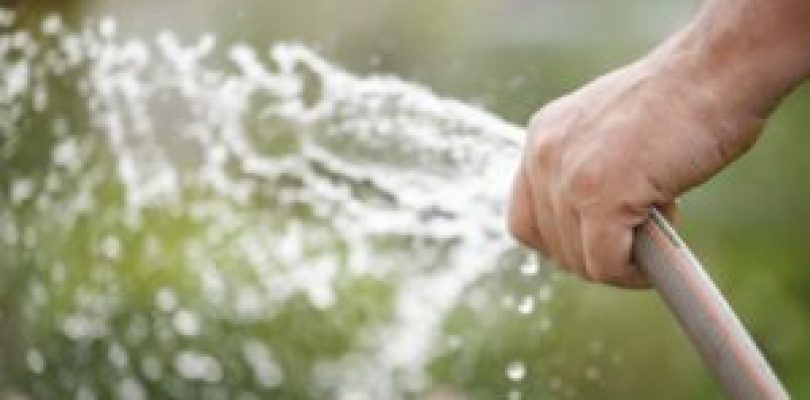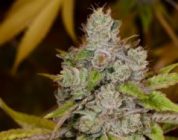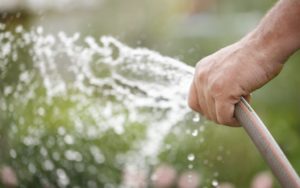 There are times that you can conclude that no one knows what they’re talking about. Just for example, too many people have too many ideas on how to water your marijuana plant for optimum growth.
There are times that you can conclude that no one knows what they’re talking about. Just for example, too many people have too many ideas on how to water your marijuana plant for optimum growth.
No matter what topic you bring up in the cannabis world, someone else chimes in with their opinion. My theory is that everything surrounding weed has been so hidden, so far off the market that what you have is an anecdotal history.
In other words, in the absence of legitimate and extensive research, you must depend on personal experiences. Any marijuana forum just goes to prove no two users have the same experience.
The fundamentals
Cannabis is a flowering plant. Like all flowering plants, it requires water to grow, leaf, and bud. Some 80% of a plant is water, and it enables processes like photosynthesis, nutrient absorption, and transpiration. Water strengthens and supports the plant structure.
Still, it’s difficult to simplify the watering process when any guideline must acknowledge cannabis strain, climate conditions, humidity percent, pot size, soil type, and temperature.
Water Source:
Distilled water has removed chemicals and impurities. Your local supermarket carries it at very low cost. It’s a convenient solution for watering a few plants indoors.
But, any nutrients have also been distilled away, so that creates zero-based benchmark for your need to add nutrients. This is also true of waters labeled “purified” or “reverse osmosis.”
Most tap water will do just fine. But, you must let it rest in an open container for 24 hours or more so the chlorine can evaporate until you are satisfied with the pH and EC test results.
Water Quality:
Water has two measurable elements. The pH factor reads the level of acidity in the water source according to the number of hydrogen ions. You read the test results for a range between 1 and 14. Any score 1 – 6 is acidic, and scores 8 – 14 are base. And, a 7 is neutral.
EC or electrical conductivity measures the material dissolved in the fluid. That material conducts electricity, so the higher the material content, the higher the EC.
You want that EC to register below 4, but if it’s higher, you can add distilled water until it levels out.
You can purchase test kits to make the task easier. For example, you might look at these two items:
- Combo Meter for EC Conductivity, TDS, and Temperature PPM PPT C/F Pen-type
- Apera Instruments A1209 PH20 Value Waterproof pH Pocket Tester
Watering Habit:
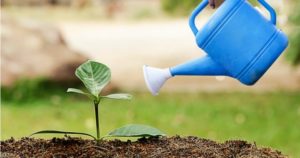 To optimize your watering plans, you need a strategy to water from seed to flower. That includes adjusting for the needs of specific strains.
To optimize your watering plans, you need a strategy to water from seed to flower. That includes adjusting for the needs of specific strains.
You can learn to read your plant. Leafs will wilt when they are underwatered because they need it for strength and support.
On the hand, if leafs curl, twist, and turn yellow at the tip, they are getting too much water. Too much water slows plant growth and invites mold and fungus.
Watering Technique:
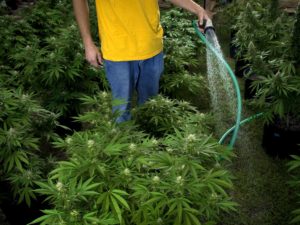 Cannabis likes water, but it doesn’t want continuous watering. Once a plant is established, you can press a knuckle into the soil. If it hits moisture, things are just fine. If it hits dry medium, it needs water.
Cannabis likes water, but it doesn’t want continuous watering. Once a plant is established, you can press a knuckle into the soil. If it hits moisture, things are just fine. If it hits dry medium, it needs water.
When you water, you add a volume that is a quarter of the pot’s volume. For example, if the pot holds four liters, you want to add one liter of water each time you water.
That’s also a clue to another test you can run. If you weigh a pot with a plant after you water it, once the weight is down, it’s time to water again.
In any case, you will probably water established plants, 2-3 times a day every three to six days. You water the soil around the bottom of the plant at the top of the soil instead of sprinkling from the top.
When there’s just a few plants, you might use a plastic bottle hand sprinkler to moisten the top of the soil level. As the plant grows, it needs more water, but you don’t want to wash out the base or soak the roots.
One sign is the volume of water in the runoff saucer for the pot. If it is 20 – 30% of the water poured, you’re doing okay.
Watering with just a touch of bio-degradable liquid soap will make the water “wetter” and fight pests.
Watering Stages:
The watering habits change as the plant goes through its stages. Seedlings need water regularly but not voluminously.
Too much water will drown the seed, so water it lightly twice a day. Sprinkle or drip the water on the growing medium around the base of the plant – not directly on the seedling.
As the plant grows, you test the top quarter inch for moisture several times a day. If it is dry, that’s your signal to water. But, the surface of the soil may crust, so break it up a bit before watering.
As the cannabis flowers, it still needs water because the flowers themselves thirst. And, chances are that the temperature is higher during your flowering season wherever you are.
Watering Slow:
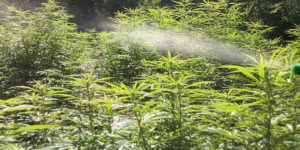 Anticipating your plant harvest, you will slack off on the watering to avoid mold, mildew, and fungus.
Anticipating your plant harvest, you will slack off on the watering to avoid mold, mildew, and fungus.
Too much water for too long will hamper resin development, and with low resin, you have no marijuana treat.
You want the root ball to grow and the water to drain without flushing out the nutrients. But, a lot depends on your soil or growing medium. You want things to stay wet but not saturated.
You’re takeaway?
Quality weed depends on healthy buds and leafs. And, they depend on regular but not flooding water. In time, you will develop a feel for the texture of your favorite strain, and if you are farming personally, you will come to gauge the most effective watering regimen.
What you don’t want to do is waste time and money figuring that out!
